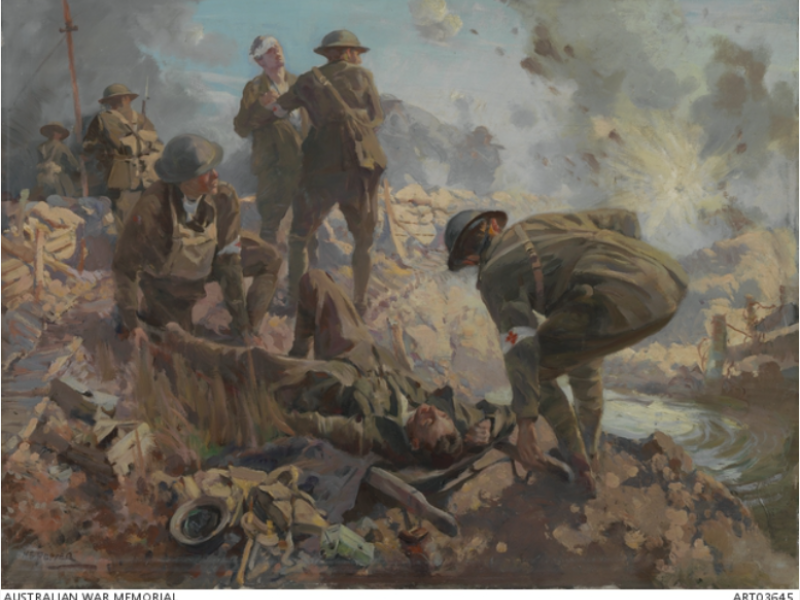Private Henry Gordon Loone, 4th Field Ambulance
Henry Loone, who went by his middle name “Gordon”, was born on 10 January 1885, the third son of Arthur and Keturah Loone of Scottsdale, Tasmania. There were eight boys and one girl in the family.
Gordon’s father was active in local business and became a member of the Legislative Council in Tasmania. Henry’s mother was prominent at the Methodist Church and in the Country Women’s Association.
Gordon was described as being “of a splendid and able character, clean living and upright, his quiet and unassuming manner won for him many friends and admirers, and he proved a son of whom any parents might be proud … Gordon was of a genial, optimistic disposition, ready for a joke, full of banter and one of the best known fellows in town.”
Loone enlisted in the Australian Imperial Force in September 1915, embarking in March 1916 with reinforcements to the Australian Army Medical Corps. From June 1916, he was with the 4th Field Ambulance on the Western Front.
Loone was a stretcher bearer during some of the fiercest battles, including Pozieres and Mouquet Farm in 1916, and Bullecourt in early 1917.
In late September, they were in the battle of Menin Road at Ypres, carrying wounded from the field as well as blankets, stretchers, water and food to the forward lines, while under heavy fire.
Loone wrote home, saying “we are standing to, ready to move at any minute for the front on a stretcher-bearer job.” Loone mentioned the recent death of a friend from Scottsdale, writing, “and so poor Neville Hookway has paid the price… one good thing to know is that he was killed instantaneously.”
On 28 September 1917, Private Gordon Loone was shot in the temple. Taken to the 3rd Canadian Casualty Clearing Station near Poperinghe, he died shortly afterwards.
Major Furber of the 4th Field Ambulance wrote to Gordon’s father, “I am writing to express my sympathy in your great loss. It was a tremendous shock to me, and I felt it very deeply, as Gordon has been very closely attached to me for upwards of fifteen months, and I had conceived a great affection for his personality, and a great admiration for his honesty, willingness and bravery.”
Furber added, “he had been through many tight corners with me, and had come through each ordeal with flying colours always, and it is there under stress that one learns to appreciate real men. Nothing, of course, can make up for your loss, but it must be some consolation to you that he died doing his duty in the bravest and most gloriest work of stretcher-bearing, and bringing to safety his wounded comrade soldiers.”
Private Gordon Loone was buried in the Lijssenthoek Military Cemetery in Belgium, where he lies today under the simple epitaph: “beloved son Hon AW & KA Loone, Scottsdale, Tasmania.” He was 33 years old.
Meleah Hampton, Historian, Military History Section
Image: Australian stretcher bearers with casualty on stretcher preparing to leave the battlefield, Belgium, WW1.

 Australian War Memorial
Australian War Memorial